by Beth Bolles | Oct 28, 2014
A common question about insects when cold temperatures arrive is whether or not the cold will kill many pests. Although temperatures will occasionally drop below freezing in north Florida, it is normally not cold enough to significantly impact insect populations for the upcoming year.
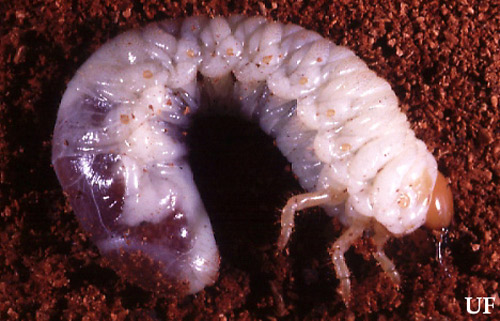
Typical white grub of the genus Phyllophaga. Photograph by John L. Capinera, UF / IFAS
Even when we do receive a significant amount of cold weather, insects have many methods to survive weather changes. Some insects survive by moving to micro-habitats that are more resistant to temperature fluctuations. Beetle larvae may move deep in the soil or into logs and trees for protection. The grubs can continue feeding on decomposing material throughout winter months. Beneficial insects such as dragonflies and damselflies stay protected in their nymph forms in the mud of ponds and lakes.
One of the most famous insect survival strategies is migration. We are all familiar with the late summer and fall flights of the monarch butterfly to warmer regions of Mexico and southern California. Those butterflies and moths that do not migrate have their own survival techniques. They will overwinter in protective pupal cases to emerge as adults in the spring. Moth cocoons are spun of silk and may be composed of multiple layers, making them a good protection for the transforming insect.
Insects are adapted for survival and can live through far colder winters than we experience. Even though our cold weather will not drastically change insect populations, periods of cold will at least slow down their activity enough for us to enjoy a break from many pest worries.
by Beth Bolles | Oct 14, 2014
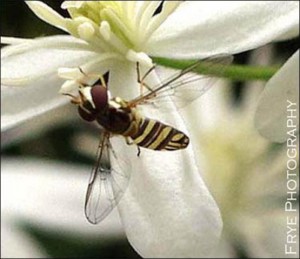
Hover Fly. Image Credit EDIS, Roy Frye
When someone mentions flies, we think of buzzing around our heads, maggots in decomposing materials, and unclean conditions. It is time to change those thoughts, at least in the garden. There are several flies commonly found in landscapes that provide a valuable service in pest management. The long-legged fly is a beautiful fly that is normally metallic copper, blue or green. It is very slender with long, thin legs and is common in most gardens. The larvae or maggots can be found in moist soil or rotted vegetation and like the adults are predaceous on aphids, thrips, mites, and other small-bodied arthropods. The hover fly is also found around flowers and has the rare ability to hover and fly backwards. Because of their yellow-striped abdomen and similar coloring, these flies are often mistaken for bees. Adults visit flowers for nectar and help with pollination while the larvae primarily feed on aphids.
The tachinid fly, is similar to the house fly in appearance, but is an excellent parasite of pest caterpillars, beetles and bugs. The adults are gray or black in color with stiff hairs on their bodies. The larvae spend their lives feeding inside the bodies of unwanted insects and are so valuable that exotic tachinids have been introduced into North America as part of biological control programs.
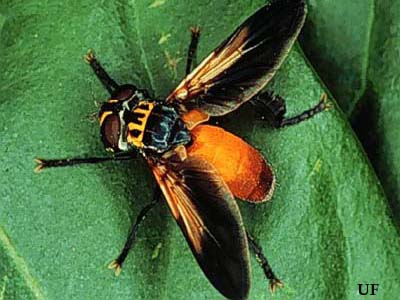
Tachinid Fly. Image Credit UF / IFAS Entomology Department
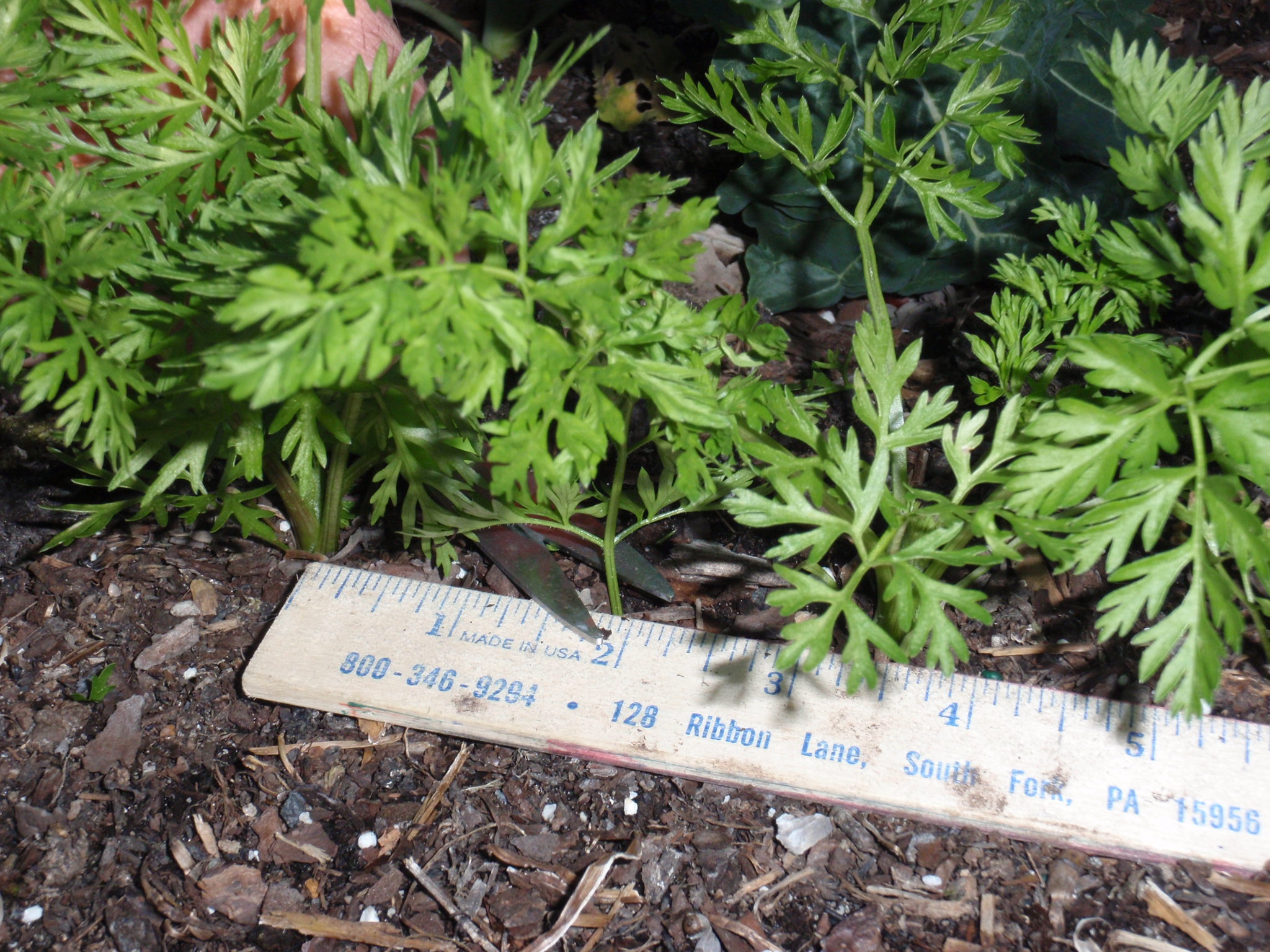
by Beth Bolles | Sep 30, 2014
Some vegetables and herbs like lettuce, carrots, collards, basil, and radish have very small seeds. It is difficult to plant these seeds so there is space between emerging plants for proper development. These plants will often need thinning after they mature. Thinning allows for adequate space for leaf and root development during the growing season. Crowded vegetables will compete with each other for water, nutrients, and sunlight and never produce quality plants. Here are the tips for thinning seedlings:
- When plants are about 1 to 2 inches tall or have two sets of ‘true’ leaves’, it is time to thin out any crowded plants.
- Look up the proper spacing between plants and thin out appropriately. Use the chart in the Florida Vegetable Gardening Guide to determine spacing for specific fruits and vegetables.
- You may pull out seedlings with your hands or forceps to make space or use small scissors to cut off seedlings at the ground level.
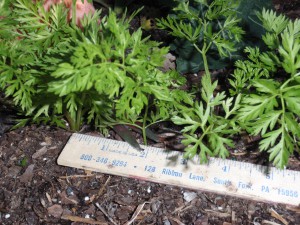
Using scissors to cut unwanted seedlings prevents you from dislodging the root system of plants that will be left to mature. Photo by Beth Bolles, Escambia County Extension UF/IFAS
It will initially look like you have lots of room in the garden but realize plants will quickly grow to utilize available space. Some young seedlings like those of radish or lettuce can added to dishes and eaten as sprouts.
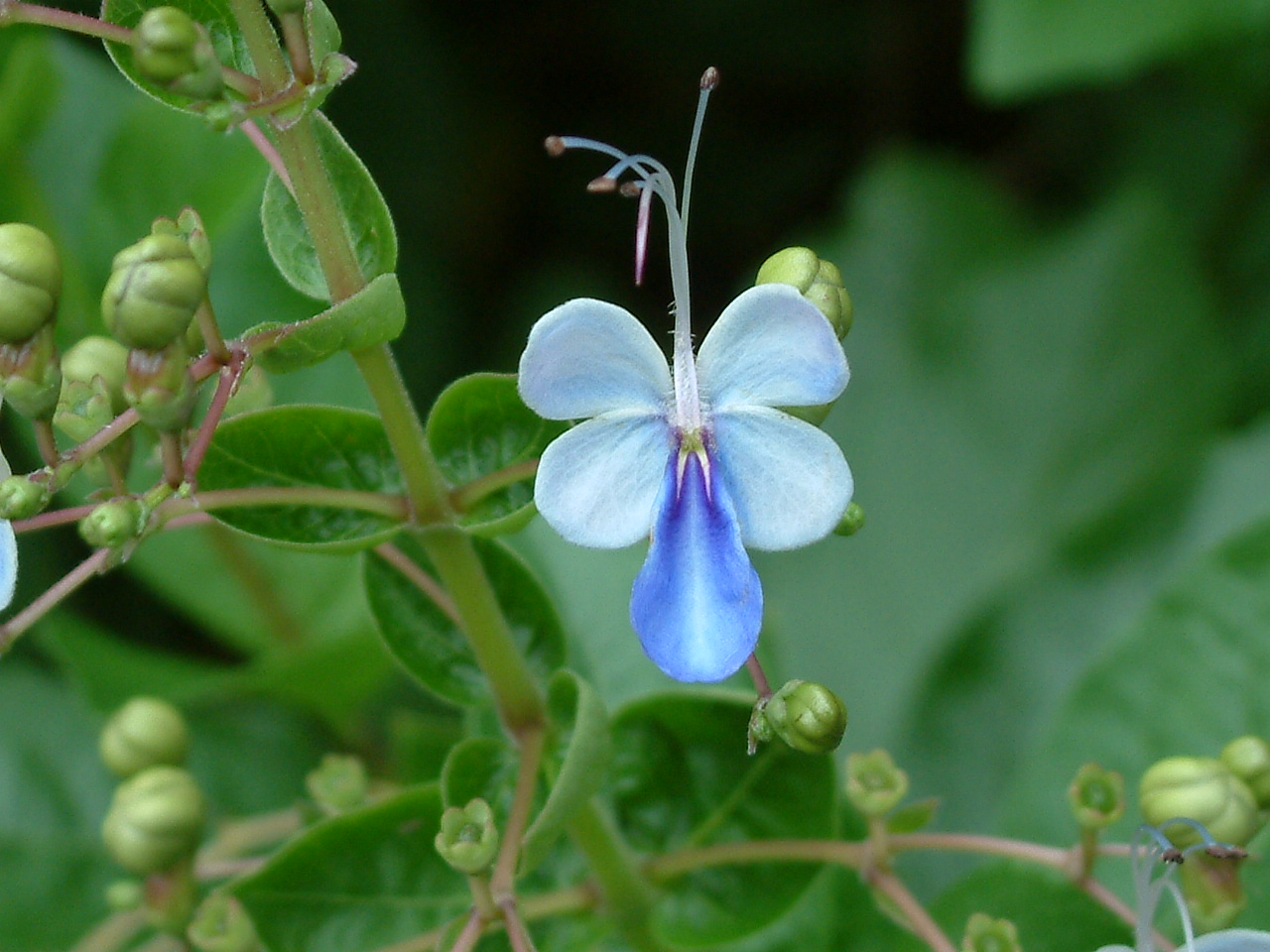
by Beth Bolles | Sep 2, 2014
Many species of butterflies are flitting through summer gardens but a special butterfly has recently made its appearance in perennial gardens. The Blue butterfly bush, Clerodendrum ugandense is a mid to late summer blooming plant that has unique flowers resembling butterflies.
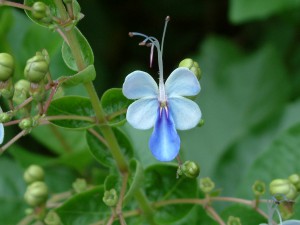
Photo: Beth Bolles, UF IFAS Extension Escambia County
During our hottest days, light blue flowers appear above attractive green foliage. Plants may grow between 6 and 10 feet in height when provided with partial shade and moisture during the warm season. Although butterfly bush is a frost sensitive plant, it will likely return from the roots in hardiness zones 8 and 9. Even when replanted in the spring, it grows well enough that you will enjoy a flowering display by summer’s end. Plant your butterfly bush to accommodate a spreading growth habit and where garden visitors can get a close view of the interesting flowers.
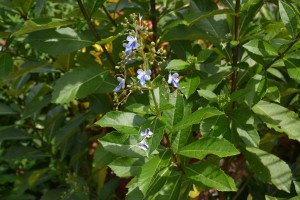
Flower panicles. Photo: Beth Bolles, UF IFAS Extension Escambia County
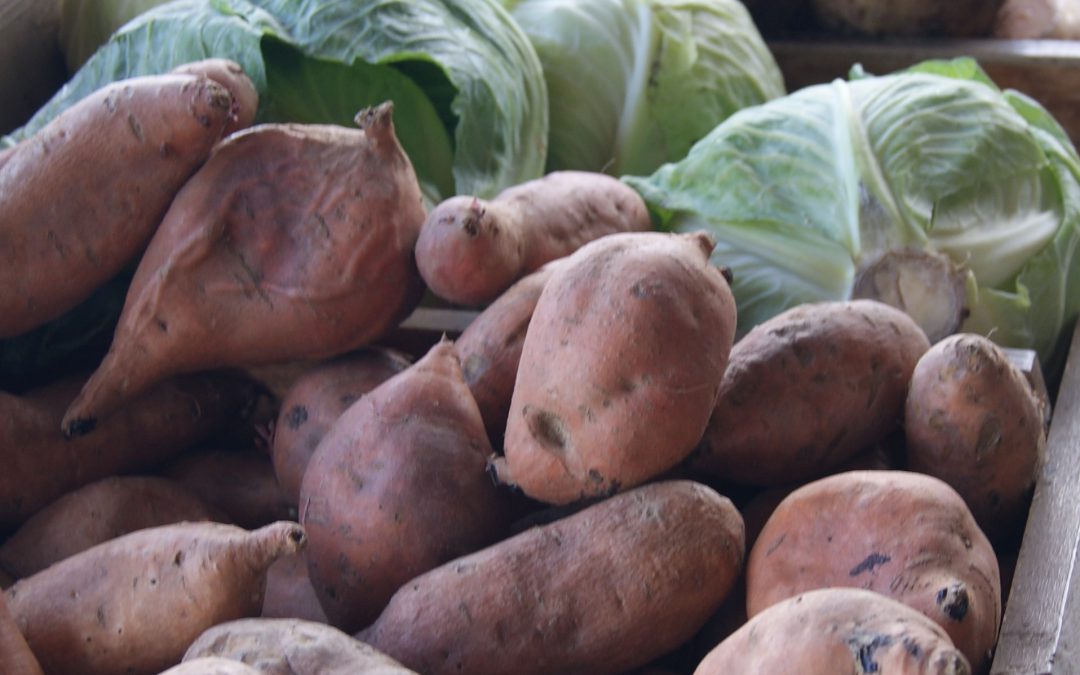
by Beth Bolles | Sep 2, 2014
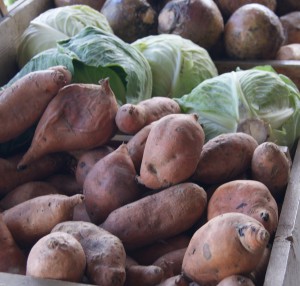
A bountiful harvest
A hands-on workshop will be offered for novice gardeners to learn the basics of Fall and Winter vegetable gardening. The entire class will be outside utilizing raised beds and in ground planting areas. Participants will be learning about soil preparation, seeding and transplanting techniques, vegetable thinning, and general care until harvest. Class size is limited to 20 people. Pre registration is required before September 17 by calling 475-5230 or emailing bbolles@ufl.edu
The session will be at Escambia County Extension, 3740 Stefani Road on Saturday, September 20 from 9:00 a.m. to 11:00 a.m. Dress for outside weather.










